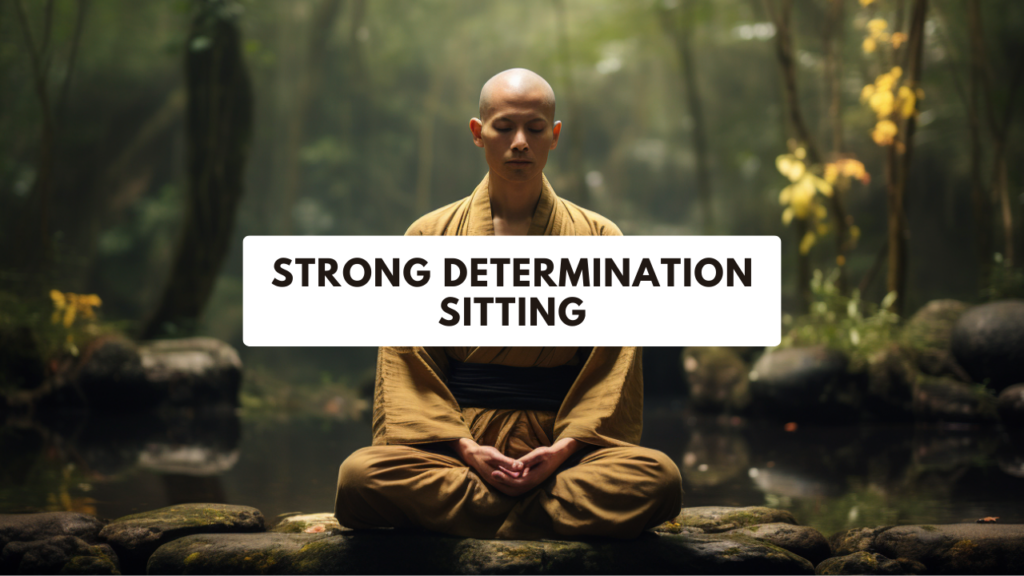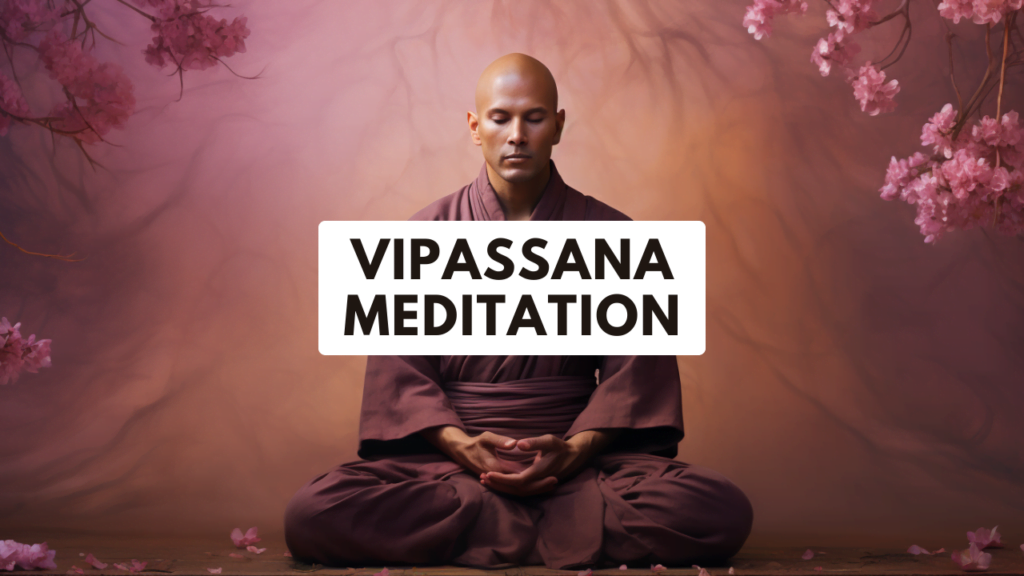What Is Strong Determination Sitting in Meditation?
Strong determination sitting is one of the most powerful and potent forms of meditation for spiritual growth. It’s original purpose was to help serious spiritual seekers make breakthroughs faster by using a more intense form of meditation. Strong determination sitting meditation originates from the Pali term Adhiṭṭhān which translates to “determination” in English. Do you want to learn about the most potent meditation practice out there? Well you’re in the right place. What is strong determination sitting? Strong determination sitting is a form of Vipassana meditation which involves sitting completely still for long periods of time while maintaining complete focus. Strong determination sitting requires much longer durations of time that can last from hours to even days in extreme cases. Have an itch? Too bad, you’re not allowed to scratch it during a strong determination sit. When you are doing a strong determination sit you are not meant to react to any physical pain or discomfort, and instead maintain your posture and position. You can see how brutal this could get for even just 30 minutes of meditation. What Is The Purpose of Strong Determination Sitting? The purpose of strong determination sitting is twofold: One is to train mental resiliency and to develop deep concentration & mindfulness even in the face of deep discomfort and even pain. When you challenge yourself with such intense and long meditation sessions, you are training your brain to stay calm and aware even in the most uncomfortable situations. The second is to delve into deeper states of meditation to help you have spiritual breakthroughs or awakenings (especially, with regards to Vipassana meditation. > see also How To Meditate For Spiritual Awakening How to do a strong determination sit Here’s how you can practice strong determination sitting for yourself. 1. Set your intention Before you begin your strong determination sit set an intention for your session. Are you doing this for a more disciplined and strong mind? Are you meditating to learn more about what’s deep in your brain? Or are you trying to have a spiritual awakening? 2. Choose your time and place Choose a time during the day when you can spare a hour and aren’t rushed as strong determination sits may take longer than the usual mindfulness meditation session. Make sure you also find a location where you will not be distracted. It’s also important to sit somewhere comfortable as you will be sitting in this spot without moving for a long while. 3. Start with short sessions Start your sessions at short durations. Strong determinations sits can quickly get overwhelming and uncomfortable for new meditators. For this reason you should start with a 10-15 minutes session and work your way up from there. 4. Set a timer and prepare your posture Set your timer for the desired amount of meditation time. Without a timer you will have no idea when to stop meditating. Your sense of time can get confused in long meditation sessions! Find a posture that you will be able to maintain for a long period of time. You may try the classic legs crossed lotus position. If you are prone to back pain or your legs easily go numb during meditation you might want to sit upright in a chair with a rigid back. 5. Mindfully observe sensations, thoughts, and feelings Begin your meditation practice as you usually would by focusing your attention on whatever arises in your awareness. You can focus on a particular thing like your breathing or just watch as different thoughts, feelings, and sensations arise. 6. Maintain discipline and stillness What sets strong determination sitting apart from other types of meditation is the inability to move during meditation. No matter the pain, numbness, or discomfort you are staying totally still during a strong determination sit 7. Gradually lengthen meditation sessions As you continue practicing strong determination sitting meditation, you can begin to lengthen your sessions as you get more comfortable. The longer your sessions become, the more you will find the benefits of strong determination sitting. Benefits of strong determination sitting Why would you want to put yourself through all of that discomfort you may ask? Strong determination sitting meditation has many benefits including: Though strong determination meditation may be the most difficult form of meditation, it definitely is the most potent when it comes to benefits. Some report diving into and healing past traumas due to strong determination sits while others simply enjoy the practice of daily mental discipline. Conclusion Strong determination sitting meditation is the most extreme and difficult form of meditation you can practice. Though it can be uncomfortable at times, strong determination sitting can lead to great mental resilience and personal & spiritual growth.
What Is Strong Determination Sitting in Meditation? Read More »



